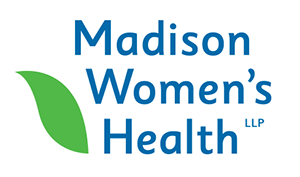Hypertension & Preeclampsia: How to Prevent and Treat These Conditions
Because gestational hypertension occurs in women who previously had normal blood pressures — and often is without noticeable symptoms — a diagnosis of hypertension often comes as a surprise.
We understand a diagnosis of gestational hypertension can be worrisome, especially if it develops into preeclampsia. But you’re not alone. Many women have received these diagnoses. In fact, gestational hypertension and preeclampsia are some of the most common issues we take care of with our pregnant patients, complicating 5-10% of pregnancies. Both conditions have become more prevalent over the last 30 years.
Let’s take a closer look at blood pressure during pregnancy and the risk factors, symptoms, and treatment options for both gestational hypertension and preeclampsia.
What Your Blood Pressure Means
Your blood pressure tells the story of how hard your heart works to send blood throughout your body. Your arteries are under constant pressure as your blood circulates. That pressure is necessary to get the blood flowing to your internal organs, to the tips of your fingers and toes, and back to your heart again.
The ideal blood pressure is between 90/60 mm Hg and 120/80 mm Hg. The first number is called systolic pressure — that’s how much pressure your heart puts on your arteries with each pump of blood. The second number is called diastolic pressure. That’s the level of pressure that is constantly on your arteries. Blood pressure over 140/90 mm Hg is considered high.
If your systolic pressure is over 140 mm Hg, or your diastolic pressure is over 90 mm Hg, or both numbers are high at your prenatal appointment, then your doctor will want to measure it again within a short timeframe (within a few hours or sometimes the next day). Sometimes, it is just the stress or worry of a doctor’s appointment or other outside factors that temporarily raises your blood pressure. Temporarily elevated blood pressure is not considered hypertension.
Gestational hypertension is defined as either number in your blood pressure being over 140 / 90 mm Hg when measured two times at least 4 hours apart. It is diagnosed after you are 20 weeks pregnant and in women who previously had a normal blood pressure.
Why Your Blood Pressure Matters More When You’re Pregnant
Blood pressure can increase at the end of pregnancy. For that reason (and several others!), you’ll have many more prenatal appointments in the final weeks of your third trimester.
When your blood pressure is high, your heart has to work harder to pump blood through your body. Chronic high blood pressure, or hypertension, puts extra stress on your heart and arteries, and even on your eyes. When you’re pregnant, high blood pressure makes it harder for your placenta to get enough blood, which limits the nutrients and oxygen your baby receives. When there’s decreased blood flow to the placenta, your baby’s growth can slow, which can lead to low birth weight or premature birth. Hypertension can also lead to low levels of amniotic fluid and placental abruption (when the placenta pulls away from the uterus).
Gestational hypertension can progress to preeclampsia and can affect your other organs, leading to seizure, stroke, and problems with your kidney or liver. It puts you at increased risk for heart disease, stroke, and high blood pressure later in life.
The Difference Between Preeclampsia and Gestational Hypertension
The difference between gestational hypertension and preeclampsia is how they affect your other organs.
Sometimes, gestational hypertension develops into preeclampsia, which can be a dangerous condition because of how severely it affects your organs. It can happen after you’re 20 weeks pregnant but is more frequent when you’re closer to full term. It is usually, but not always, accompanied by protein in your urine (new-onset proteinuria).
Sometimes, there is no protein in the urine, but there are other lab abnormalities and symptoms such as:
- low platelets
- impaired liver function
- pain in the upper right part of your abdomen
- renal insufficiency (problem with kidney function)
- pulmonary edema (fluid in the lungs)
- severe headache
- or visual changes
These lab abnormalities are known as HELLP syndrome. HELLP syndrome stands for Hemolysis, Elevated Liver enzymes, and Low Platelet count. HELLP syndrome is one of the more severe forms of preeclampsia.
Symptoms of Gestational Hypertension and Preeclampsia
Some patients have no symptoms of high blood pressure. The only reason they know their blood pressure is high is because it’s being monitored at each prenatal exam. (This is why it’s so important to attend all your prenatal appointments!)
Some patients have these symptoms:
- increased edema (swelling)
- headaches
- changes in their vision
- pain in the upper right side of their abdomen (the location of the liver)
- nausea
- or vomiting
It’s important to call your doctor if you experience those symptoms.
Risk Factors of Preeclampsia and Gestational Hypertension
Right now, it’s not known why some women develop gestational hypertension or preeclampsia. However, some factors put women more at risk of developing these hypertensive disorders.
Risk factors in your personal and family history include:
- if your mother or sister had preeclampsia
- if you had preeclampsia before
- if you’re a first time mom
- if it has been more than 10 years since your previous pregnancy
- or if a previous pregnancy had complications
Risk factors in your health before pregnancy include:
- if you have chronic hypertension
- if you have Type 1 or Type 2 diabetes
- if you have renal (kidney) disease
- if you have an autoimmune disease
- or if you have obesity
Other risk factors include:
- if you’re having twins, triplets, or more
- if you are Black
- or if you are older than 35
Prevention and Treatments for Preeclampsia and Gestational Hypertension
Because the causes of gestational hypertension and preeclampsia are not entirely understood, the best way to try to prevent this from happening is to maintain a healthy lifestyle before pregnancy. For those who are at higher risk of preeclampsia, it’s also recommended to take 81 mg of aspirin (baby aspirin) daily starting at 12-16 weeks gestation. This may help prevent or delay the development of preeclampsia.
Gestational hypertension and preeclampsia are ultimately treated with the delivery of the baby. If someone is diagnosed with this condition after 37 weeks, your OBGYN will recommend delivery at that time. If these conditions develop earlier in your pregnancy, then there is more clinical decision making and monitoring involved. Sometimes, this may lead to delivery earlier than 37 weeks or close monitoring (either outpatient or inpatient) until 37 weeks.
Your OBGYN may use an antihypertensive medication to treat blood pressure during and after delivery. In the case of severe gestational hypertension or severe preeclampsia, she may also use a medication called magnesium sulfate to prevent seizures.
There is no natural remedy to treat preeclampsia. There is insufficient evidence to prove vitamin C, vitamin E, vitamin D, fish oil, garlic supplementation, folic acid or sodium restriction reduces the risk of preeclampsia.
What to Do if You’re Diagnosed with Gestational Hypertension or Preeclampsia
Most often, our patients want to know what happens next, especially when their diagnoses appears suddenly at the end of pregnancy. If you have elevated blood pressure at a prenatal appointment, it’s common for more labs to be drawn. A plan will be made for management of the condition at that time — most often, that plan includes delivery (induced labor) if you are after 37 weeks pregnant, or additional fetal monitoring if you are less than 37 weeks.
Gestational hypertension and preeclampsia are the most common reasons a woman would be induced. These are some of the most common complications we see in the day-to-day practice at our OBGYN clinic.
Any diagnosis or complication during pregnancy can be worrisome. Hearing that you need to be induced can be scary — it probably wasn’t part of your original birth plan. Please know we are here to help you understand the diagnosis and what it means for you and your baby. At the same time, be reassured that this is a relatively common diagnosis that we see almost every day.
We always want you to feel heard and that you know what your options are. We will address any fears or concerns you have and answer your questions to the best of our ability. Our goal is that you have a healthy pregnancy and the best possible outcome for you and your baby!
 Dr. Sarah Yanke has been providing healthcare to women in Madison since 2010, specializing in high and low-risk obstetrics, contraception, management of abnormal uterine bleeding, and minimally invasive surgical techniques. She is a Board Certified Fellow of the American College of Obstetrics and Gynecology.
Dr. Sarah Yanke has been providing healthcare to women in Madison since 2010, specializing in high and low-risk obstetrics, contraception, management of abnormal uterine bleeding, and minimally invasive surgical techniques. She is a Board Certified Fellow of the American College of Obstetrics and Gynecology.














